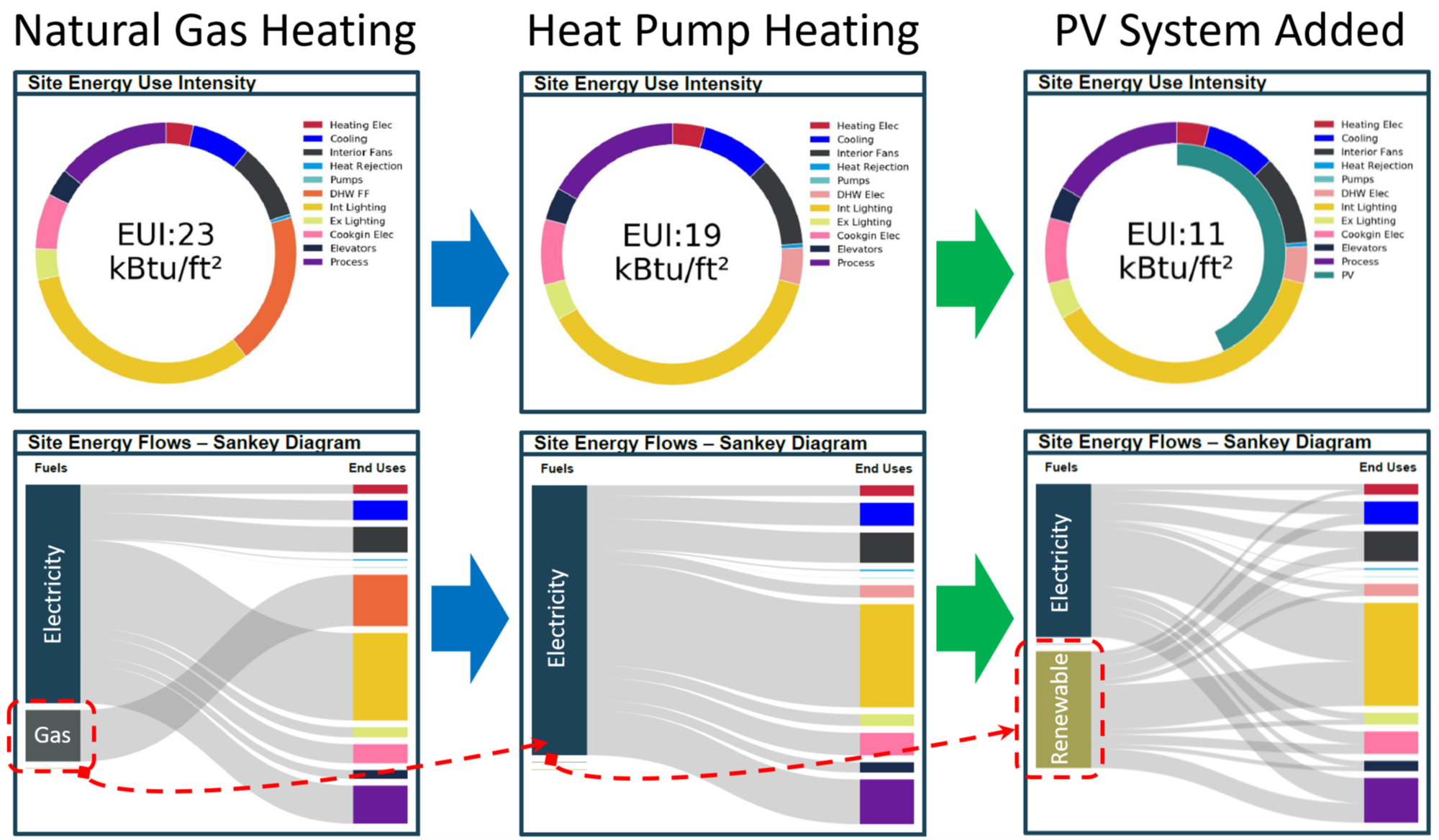Case Studies
Conceptual Energy Analysis of High-Performance Multi-Family Affordable Housing
Background
National CORE is a regional developer builder of affordable housing – the fourth largest in the United States – and was the first non-architectural entity to sign onto the AIA-2030 Commitment. National CORE was named a 2018 Power Builder by the USGBC, a distinction given to a handful of builders who exemplify excellence in the arena of building to the USGB’s LEED for Homes standard.
The Project
The Iris at San Ysidro project comprises 100 units of multi-family affordable housing located in San Diego, California.

Modeling with Conceptual Massing
All residential units are aggregated floor by floor into zones and glazing aggregated to the zone, an approach which is good enough for conceptual analysis. Once design development is done and window sizes have been finalized, the model will be updated and each zone broken down to unit level so that HVAC load sizing can be done unit by unit.

Method
National CORE uses the energy modeling process to define goals, measure progress, and identify detailed specifics in its affordable housing projects. Before starting, energy targets for the building are identified using the IESVE Navigator for Architecture 2030 Challenge, so that an Energy Use Intensity (EUI) number can be identified for the design team. With EUI in hand, the cornerstone of this is IESVE which is deployed as soon as projects take shape. The conceptual modeling workflow within IESVE includes:
- Defining the building floor by floor, based on conceptual architectural plans. DXF drawings are traced within Model IT, and windows are aggregated together by orientation and related zone (block of apartments).
- Constructions are assigned based on methods typically deployed in National CORE projects (wood framed wall with batt insulation, flat roofs with ventilated attic space, podium slabs over structured parking or slab on grade, vinyl windows for residential units, and non-NFRC storefronts at communal spaces). These are standardized for future use.
- Thermal templates for each unique building space (apartments, community rooms, office spaces, laundry rooms, circulation, etc.) are created from ASHRAE prototype files available in IESVE (these are kept in templates for ease of future use).
- HVAC systems are defined within ApacheHVAC based on systems typically deployed to meet the stricter Title 24 requirements and to allow for trading off between envelope and energy systems as allowed by the performance modeling method (defined within Title 24). For affordable housing, National CORE deploy ducted mini splits with high SEER/EER ratings, that help offset what is generally a prescriptive requirement to include exterior rigid insulation (which is both expensive and complicated in limiting the exterior finish of the exterior wall).
- Rooftops are configured to allow for maximum deployment of PV, which is configured within IESVE so that the impact of renewable energy systems can be studied and the economic impact identified.
- An Energy Modeling report is created and measured against the 2030 targets for the building. A report is then generated for the team describing building envelope and energy systems for the team to begin design.
- Energy systems are carefully studied to determine which options will reduce first cost, long-term operational costs, and building energy use. There is considerable attention paid to heating hot water in multi-family housing as this can account for 30% or more of total building energy use. With a focus on decarbonization, options for natural gas and heat pump water heaters are carefully studied (See: Heating with a Natural Gas Boiler; Heating with an electric Heat Pump)

8. Renewable Energy systems are evaluated to determine what can fit on the roof, and what impact this will have on the pEUI and how close this will get us to National CORE’s AIA-2030 Commitment targets (Heat Pump with 185kW DC PV).
Final Thoughts & Conclusions
In 2007, Governor Schwarzenegger signed AB 32 (the California Climate Action Act) into law, identifying a long term goal to reduce greenhouse gas emissions in the State to pre-1990 levels prior to the year 2020. The ambitious goal was the first of its kind in the United States, used the Kyoto Protocol as a target, and helped establish the first building code requirements to reduce energy use in buildings. Targets for energy use, and modeling methodologies used to demonstrate compliance with the energy code would evolve with energy code updates, every three years, culminating in Zero Net Energy (ZNE) residential buildings (three stories or less) by the year 2020, and ZNE commercial buildings by 2030. ASHRAE had similarly produced modeling standards and protocols for modeling building energy performance, which had gathered wide adoption thanks to USGBC’s LEED Rating system.
Within California, understanding the requirements and pathways to Energy Code (Title 24) compliance became an increasingly important conversation in the design process and with the advent of the 2019 Code the timing of these conversations has become critical. It is no longer possible to put off these conversations until design intent is established and the architecture and engineering teams have had a chance to fully identify the building envelope and the energy systems. The analysis and conversation must happen up front. Nowhere is the fact more apparent and the need more important than in the planning for affordable housing.
“The Iris at San Ysidro building is an example of how we can achieve a high-performance, climate-conscious and affordable building design. There is a real-world story to be told through affordable housing when it comes to both energy analysis, decarbonization and ZNE: If we can do this, everyone can.”
• • • •
Building the Future of Community
• • • •
